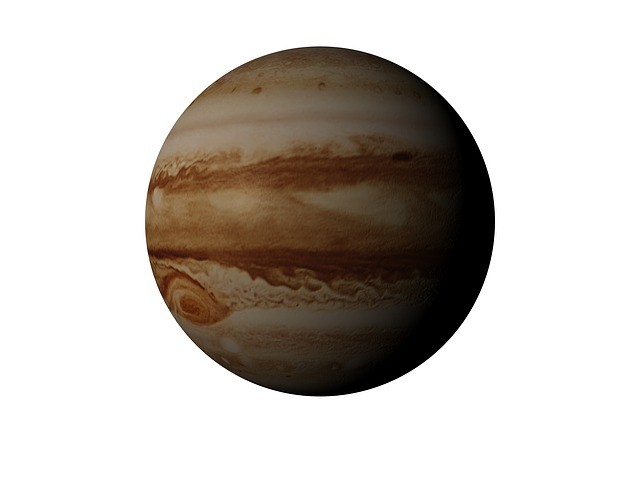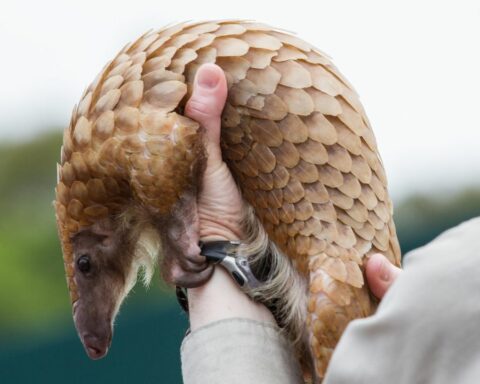Here are the top 10 Mars Facts For Kids which will provide you with a brief overview of the first planet of our solar system.
- Mars is the second smallest and fourth terrestrial planet in our solar system.
- It is named after the Roman God of War.
- Its surface is covered with iron oxide due to which it appears red in color.
- Mars has the highest mountain and the longest valley in our solar system.
- The mass of Earth is 10 times more than Mars.
- Mars has four seasons just like our planet Earth.
- The sunsets on Mars are blue in color.
- Galileo Galilei was the first person to see Mars through a telescope.
- NASA claimed to find some evidence of life on the planet Mars back in the 1970s.
- Mars has two Moons named Phobos and Deimos.
Mars Facts For Kids
What Is Mars – What Is The Red Planet
- Mars is one of the four terrestrial planets in the Solar System.
- It exists on the fourth number from the Sun.
- After Mercury, it is the second smallest planet in the Solar System.
- It has a distance of 227.9 million km from the Sun.
- The size of this planet is slightly bigger than half of the Earth.
- It is also known as the Red Planet named after the Roman God of War.
- This planet appears red because of the iron oxide coating on its surface.
- There are two Moons of the planet Mars, known as Phobos and Deimos.
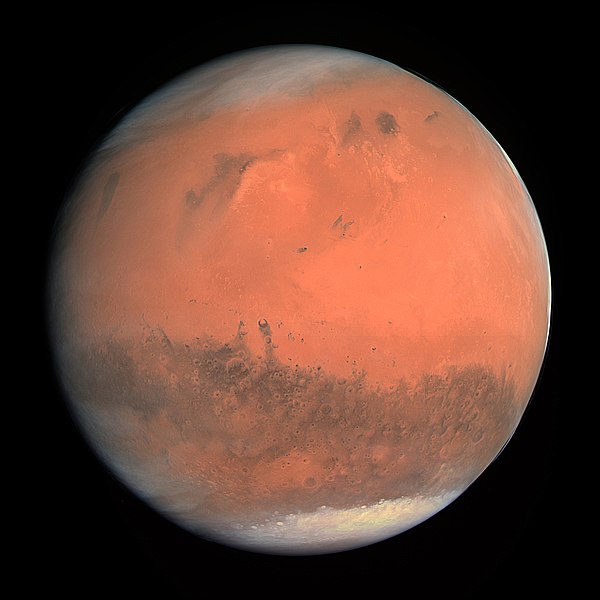
What Is Mars Named After – Mars Name Origin
- The surface of this planet is covered with iron oxide.
- This compound gives it a reddish appearance.
- Because of this, the Romans and Greeks named this planet the Red Planet.
- The name “Mars” was given after the God of War in ancient Roman religion and mythology.
- The Romans were great soldiers and that is why they named the planets after their most important gods.
What Type Of Planet Is Mars
- Mars is also a terrestrial planet like Earth, Venus, and Mercury.
- Terrestrial planets are the ones that are mainly composed of rocks and metals.
- All terrestrial planets have the same basic structure i.e. Core, Mantle, and Crust.
- Mars has a density of 3.93 g/cm3.
- The surface of Mars is covered with hundreds of volcanoes.
- Moreover, the terrestrial planets are also located closest to the Sun.
- Mars is the fourth planet from the sun.
What Is Mars Known For
- Mars is well-known for being the home of the highest mountain and the deepest and longest valley in our solar system.
- Olympus Mons- The highest mountain has a height of around 22km.
- Valles Marineris- The deepest and the longest valley is more than 4000km long, 200km wide, and around 7km deep.
Characteristics Of Mars – Features Of Mars
- Mars has an orangish-red color.
- It takes 24 hours and 37 minutes for Mars to rotate about its own axis.
- Just like Earth, Mars also revolves around the Sun and takes 687 days to do so because of its distance from the Sun.
- The atmosphere of Mars is surrounded by Carbon Dioxide, Molecular Nitrogen, and Argon.
- This atmosphere is around 100 times thinner than that of Earth.
- This planet has a dry, rocky, and dusty surface.
- Since Mars is farthest from the Sun in all the four terrestrial planets, therefore, the temperature at Mars is very cold.
- Mars has two Moons named Phobos and Deimos.
- The diameter of Mars is 6794km at its equator, while its diameter at the poles is approximately 6752km.
Special features of Mars – Unique features of Mars
- Mars is also known as “The Red Planet” because its iron-rich dust gives its landscape a rusty-red color.
- The temperature at the equator of Mars is 80 o F (26 oC), while at the poles, the temperature can drop down to -199 o F (-128 oC).
- The atmosphere of Mars is made up of mostly carbon dioxide with traces of nitrogen and argon.
- Martian is about 40 minutes longer than a day on Earth.
- The tallest mountain in the Solar System exists on Mars.
- The gravity on Mars is only 38% of the Earth’s gravity, which means if you weigh 60 pounds on Earth, you will weigh only 23 pounds on Mars.
- The soil of Mars contains water that can be extracted.
- After Earth, Mars is most likely to be habitable because of its close resemblance to Earth.
- Moreover, the duration of a Martian day is also comparable to that of the Earth.
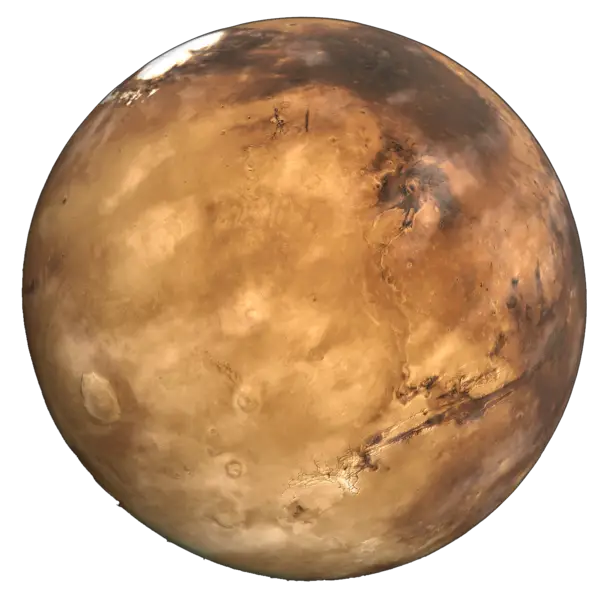
Mars Physical Properties
| Property | Value |
| Composition | Rocks and Minerals (mostly iron, nickel, and sulphur) |
| Diameter (at its equator) | 6794 km (4221.596 mi) |
| Average density | 3.9335 g/cm3 |
| Mass | 6.4171×1023 kg (1.4147×1024 lb) |
| Surface area | 144798500 km2 (55907013.4037 sq mi) |
| Volume | 1.6318×1011 km3 (3.91489639 × 1010 cu mi) |
| Rotation period | 24 hours 37 minutes |
| Mean surface temperature | 210 K (−63 ℃) |
| Mean surface pressure | 0.636kPa |
What Does Mars Look Like
- Mars looks like a red ball composed of rocks, clouds, and ice caps.
- Because of the presence of Moons, valleys, mountains, deserts on the surface of Mars, it appears very much like Earth.
- From the Earth, Mars is usually visible in the evening time. It looks like a reddish star that does not glow.
What Color Is Mars
- The surface of Mars appears to be reddish because of the iron oxide coating.
- However, if you look closely, then it appears to be more like a butterscotch color.
- Some of the other shades that you will also notice on this planet are brown, tan, golden, and green that depending upon the amount and types of minerals the planet is composed of.
What Makes Mars Red – What Gives Mars Its Red Color
- The iron oxide coating on the surface of Mars makes it look red.
- Moreover, when the reddish dust on the surface of Mars blows with the wind, the sky on Mars also appears to be somewhat reddish.
What Does The Surface Of Mars Look Like
- The surface of Mars is extremely dry and barren with volcanoes and dried lake beds.
- This fact accounts for the lack of life on the Red Planet.
- The surface of Mars is mainly covered with red dust.
- This dust blows away with the wind and at times, takes the shape of a tornado that covers the whole planet.
What Would Mars Look Like With Water
- The planet Mars was covered with water around 4 billion years ago.
- At that time, its atmosphere was thick enough to maintain the required temperature to keep the water in liquid form.
- However, with time, the atmosphere reduced in thickness, hence giving rise to extremely low temperatures on the planet.
- This is why all the liquid water at Mars turned to solid ice caps.
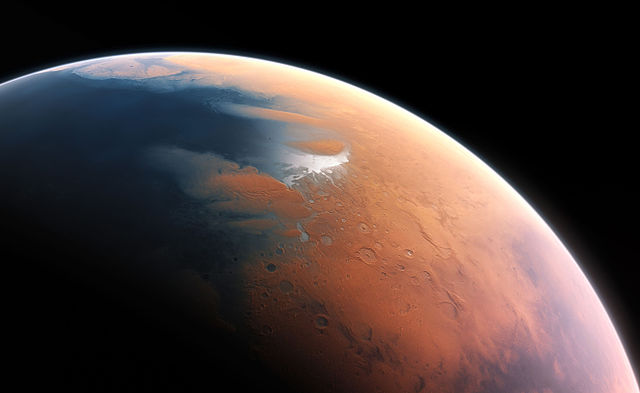
Where Is Mars Located – Mars Location
- The Right Ascension of Mars is 1h 44m 50s.
- Whereas the Declination of Mars is +6° 14’ 32’’.
- Moreover, Mars is also closely located to the Asteroid Belt.
Where Is Mars In The Solar System
- In the Solar System, Mars exists in the fourth position from the Sun.
- It is located between planet Earth and Jupiter.
Where Is Mars In The Sky
- Mars is present in the sky right opposite the Sun.
- As soon as the Sun sets in the West, the planet Mars rises in the East and it is easily visible in the sky even with the unaided eye because of the red color that this planet depicts.
What Is The Size Of Mars – How Big Is Mars – Mars Size
- Mars is approximately half of the Earth’s size.
- Its total surface area is slightly less than the total dry land of the Earth.
- The radius of Mars at the equator is 3389.5km, whereas, around the poles, it is 3376.3km.
- The surface area of this planet is 144.8 million km2.
- The circumference of Mars is 21344km.
- The mass of this planet is 6.39 x 10^23kg.

What Is The Diameter Of Mars – Diameter Of Mars (Mars Diameter In Km )
- The diameter of Mars is 6794km (4,222 miles) at the equator and around 6752km (4,196 miles) at the poles.
What Is The Mass Of Mars – Mass Of Mars In Kg
- The mass of Mars is 6.4171 x 1023kg.
Mars Mass Compared To Earth
- The mass of Mars is approximately 10 times less than that of Earth.
- The mass of Earth is 5.972 x 1024kg.
What Is The Gravity On Mars – Mars Gravity
- The gravity on Mars is 3.72076 m/s2.
- The reasons for lower gravity on Mars are; less density and lack of an internal magnetic field.
What Is The Gravity On Mars Compared To Earth
- The gravity on Earth is 9.8 m/s2.
- The gravity of Mars is only 38% that of Earth.
- So a man of 100 kg would weigh 38 kg on Mars.
History Of Mars – History Of Mars Planet
- The planet Mars came into being around 4.5 million years ago.
- During the early times, the surface of Mars was volcanically active but as the planet lost its atmosphere and the temperature cooled down, the volcanic activity ceased.
- Mars also experienced the movement of tectonic plates in the past. But because of the low temperature on the planet, there is no evidence of any such movements now.
- This planet is also believed to have liquid water resources initially but those resources froze to form ice caps as the temperature on this planet reduced.
- Around 4 billion years ago, the magnetosphere of Mars became lost, possibly due to numerous strikes of asteroids.
- It is also believed that the early atmosphere of Mars was thick enough to sustain a high temperature, but now the atmosphere has become very thin.
- Because of this, Mars has become so cold that no living creature can survive there.
- In 1610, Galileo Galilei was the first person to see Mars through a telescope.
Chemical Composition Of Mars – Mars Composition
- The planet Mars is mainly composed of iron, silicon, oxygen, magnesium, aluminum, calcium, and potassium.
- The elements which are less abundant on this planet are titanium, sulphur, chromium, manganese, phosphorus, sodium, and chlorine.
Mars Atmosphere Composition – Mars Air Composition
- Mars’s atmosphere is mainly composed of carbon dioxide (94.9%), molecular nitrogen (2.6%), and argon (1.9%).
- However, traces of water vapor, oxygen, carbon monoxide, hydrogen, and some other noble gases are also found in Martian air.
- The Martian atmosphere is fairly dusty and contains minute particles of about 1µm diameter.
- Such a dusty atmosphere gives the Martian sky a light brown to brownish-orange (tawny) color when seen from the surface.
- The atmosphere also has suspended particles of iron oxide.
- Methane is also detected in the atmosphere of Mars, which occurs in the form of extended plumes.
Mars Soil Composition – Martian Soil Composition
- Martian soil is largely composed of mineral matter.
- There are clay and silt-sized particles in its soil.
- According to the data provided by the Phoenix lander, soil on Mars is slightly alkaline with a pH of 7.7.
- It has elements like sodium, potassium, magnesium, and chlorine, which are also found in the Earth’s soil and are necessary for plants’ growth.
- Martian soil also contains a high concentration (0.6%) of salt perchlorate, which makes it toxic.
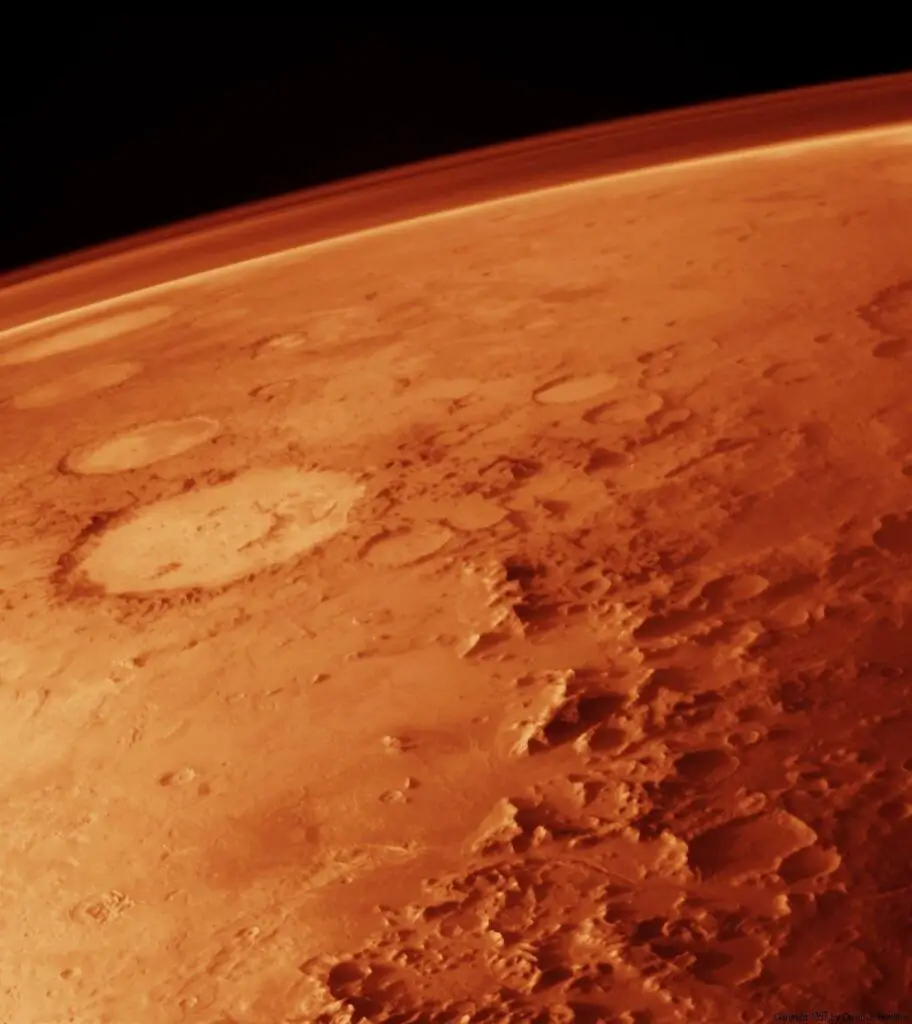
Mars Core Composition
- The core of the planet Mars is 1700 to 1850km in radius.
- According to NASA, the core is mainly composed of iron and possibly some other lighter elements, such as sulphur.
- Mars core may be similar to Earth’s core, however, its exact structure is yet unknown.
Mars Statistics
- The Mars statistics are given below:
| Mass | 6.39 x 10^23 kg |
| Diameter | 6779 km |
| Density | 3.93 g/cm3 |
| Surface Gravity | 3.711 m/s2 |
| Surface Temperature | -153 °C to 20 °C |
| Surface Pressure | 610 Pa |
| Surface Area | 144.8 million km2 |
| Circumference | 21344 km |
| Tilt of Axis | 25° |
| Rotation Period with Respect to Sun | 24.6 hours |
| Minimum Distance from the Sun | 206,700,000 km |
| Maximum Distance from the Sun | 249,200,000 km |
Life On Mars Planet – Life Found On Mars
- The existence of liquid water on the surface of a planet is believed vital for planetary habitability (the ability of a planet to develop and maintain such environmental conditions that are favorable for life’s emergence).
- Mars comes in the habitable zone during perihelion (the point in a planet’s orbit closest to the sun), however, its extremely thin atmosphere does not allow liquid water to exist over large regions for long periods.
- Recent evidence has also suggested that any water on the surface of Mars may have been extremely acidic and salty and would not be able to support terrestrial life.
- Another factor is the absence of a magnetosphere and extremely thin atmosphere on Mars, which allows only a little heat transfer on the planet’s surface. It also provides extremely poor insulation against solar winds, as well as causes insufficient atmospheric pressure that is necessary for retaining water in liquid form.
- Mars is also nearly or maybe completely, geologically dead. Ceased volcanic activities also ended minerals and chemicals recycling between the planet’s surface and interior.
- Recently, NASA claimed the discovery of organic compounds in sedimentary rocks on Mars, which indicates that some of the basic units for life were present on the planet.
- The MARSIS radar on the Mars Express orbiter also recently discovered a subglacial lack on Mars, which is the first known stable body of water on this planet.
- NASA claimed to find some evidence of life on the planet Mars back in the 1970s.
Evidence Of Life On Mars – Proof Of Life On Mars
- The Viking probes of NASA carried experiments at their landing sites on Mars to detect the presence of microorganisms in the Martian soil.
- The results of the experiments were positive, including a temporary increase in CO2 production in the soil upon exposure to nutrients and water.
- Some scientists believe that there is evidence of life on Mars while most of them argued that there is no reasonable proof of this claim.
- The Phoenix spacecraft of NASA analyzed Martian soil in 2014 and indicated that Ca(ClO4)2 in the soil has not experienced any interaction with liquid water of any form, maybe for a time as long as 600 million years. If it had any interaction, the Ca(ClO4)2 is highly soluble in contact with liquid water and would have formed Ca(ClO4)2.
- NASA announced in June 2018 that organic compounds had been discovered on Mars by the Curiosity rover. The compounds were found in sedimentary rocks and dating back to 3 billion years ago. This shows that some of the basic units for life were present on Mars.
- Scientists reported in 2018 that a 20-kilometer wide subglacial lake was discovered on Mars, which is the first known stable body of water. The lake is found at the base of the southern ice cape, 1.5 kilometers below the surface.
What Is The Temperature On Mars – Mars Average Temperature
- The average temperature on this planet is -60 °C.
Mars Temperature Range
- The temperature range of Mars is -153 °C to 20 °C.
Is Mars Hot Or Cold
- Mars also experiences four seasons like our planet Earth.
- With the temperature range of -153 °C to 20 °C, the overall climate on Mars is extremely cold.
What Is The Atmosphere Of Mars – Martian Atmosphere
- The Martian atmosphere is the layer of gases surrounding the planet.
- It is mainly made up of carbon dioxide, molecular nitrogen, and argon.
- It is believed that the atmosphere of Mars was much thicker in the past, but now it is extremely thin and can not provide enough insulation against the bombardment of solar winds.
- The atmospheric pressure on Mars is also extremely low and is insufficient to retain water in the liquid form.
What Is Mars Atmosphere Made Of
- The atmosphere of Mars is mainly made up of carbon dioxide, molecular nitrogen, and argon.
- The percent composition of Carbon dioxide is up to 95.32%, Argon is 1.9%, and molecular nitrogen is 2%.
- Traces of other gases in the Martian atmosphere include oxygen, hydrogen, carbon monoxide, water vapor, and other noble gases.
Mars Atmosphere Compared To Earth
- The atmosphere of Mars is extremely thinner than that of the Earth. Earth’s atmosphere is about 100 times denser than the Martian atmosphere.
- The atmospheric pressure on Mars is only 610 pascal, which is less than 1% of the Earth’s atmospheric pressure. It prevents the existence of water in liquid form at the Martian surface.
- The volume of the Martian atmosphere is less than 1% of the volume of Earth’s atmosphere.
What Is Mars Made Of – What Is Inside Mars
- The planet Mars is made up of dusty crust, mantle, liquid outer core, and solid inner core.
- The dust on the surface of Mars is as soft as powder.
- The crust of Mars exists beneath the dusty surface and is mostly composed of volcanic basalt rocks.
- The mantle of Mars has probably a soft rocky paste-like consistency. It is primarily composed of silicon, iron, oxygen, and magnesium.
- The core of Mars is mostly composed of iron and possibly has some light elements, such as sulphur. According to NASA, the exact structure of the Mars core is yet unknown, however, it may be similar to Earth’s core.
- Moreover, the atmosphere of Mars is a very thin layer of gases surrounding it like carbon dioxide, molecular nitrogen, and argon.
Layers Of Mars
- Mars is composed of three different layers i.e. Crust, Mantle, and Core.
- The crust or the surface is covered with fine dust.
- The mantle has a thick-paste-like consistency.
- The core is mainly composed of iron, and some other light elements, such as sulphur.
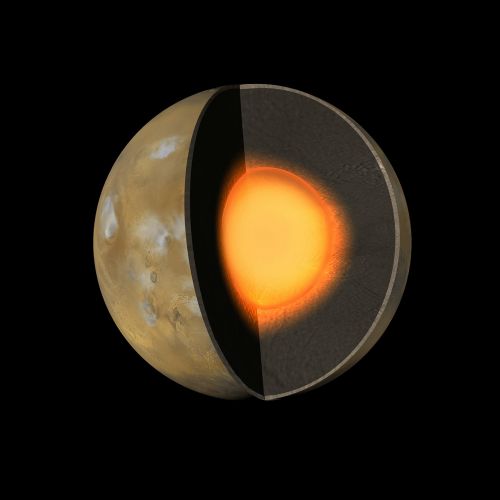
Mars Climate – Martian Climate Facts
- The climate of the planet Mars is highly unpredictable.
- It not only varies from day to day but at times, it also changes from hour to hour.
- The temperature at Mars can go as low as -153 °C.
- However, it never rises beyond 20 °C.
Mars Dust Storms Facts
- The planet Mars is very famous for its intense dust storms and experiences the largest dust storms in the Solar System.
- These dust storms can cover the entire planet and at times, they can even last for weeks.
- Whenever the temperature of this planet rises, it tends the air in the atmosphere move.
- This air carries with it the dust particles with which the surface of this planet is covered.
- This movement of dust particles with the air gives rise to the immense dust storms on Mars.
- Sometimes, when the Martian air kicks up a sufficient amount of dust, then it can even be seen from telescopes on Earth.
- The speed of the Martian dust storms varies between 53 km per hour to 160 km per hour.
- Because of these facts, the Martian storms are of great interest to scientists.
What Is A Martian
- The term Martian refers to a native inhabitant of the planet Mars.
- However, until now, it is only considered as a hypothetical term because no practical evidence of life has been found on Mars.
What Is The Distance Between Earth And Mars
- The distance between Earth and Mars is around 54.6 million km.
What Does Earth Look Like From Mars
- The Earth looks like a star if seen with a naked eye from Mars.
- However, if it is observed with a telescope from Mars, then it appears to be like a crescent.
What Is Mars Distance From The Sun
- The distance of Mars from the Sun is 1.5 Astronomical Units. One Astronomical Unit (AU) is equal to the distance of Earth from the Sun.
- In kilometers, this distance is 227.9 million km.
What Color Are Sunsets On Mars
- The sunsets on Mars are blue in color because red light is scattered by Martian dust and blue light is allowed to pass through.
What Landed On Mars
- Mars landing means the landing of a spacecraft on the Martian surface.
- The exploration of the planet Mars started back in 1971.
- From that time, a lot of landings on this planet have been attempted and 10 of them had successful soft landings.
- However, the most recent landing on this planet took place on 26th November 2018 by NASA probe InSight.
Is Mars Habitable – Is Mars Liveable
- Some evidence shows that water used to exist on this planet.
- Because of this evidence, it is considered that in the past, this planet could have been habitable for microorganisms.
- However, these habitable conditions are not sufficient enough to prove the presence of life on Mars.
Could We Live On Mars
- With the present environmental conditions of Mars, we can surely not live there.
What Do We Need To Live On Mars
- In order to survive on Mars, we need to create an artificial habitat.
- This habitat will be composed of complex life-support systems to make the temperature, pressure, gravity, atmosphere, etc. of the planet Mars suitable enough for human beings to survive.

Fun Facts For Kids About Mars – Interesting Facts About Mars For Kids
- The mass of the planet Mars is 10 times lesser than the Earth.
- The planet Mars is approximately half the size of Earth.
- Six to seven planets of mars can fit inside the Earth’s volume.
- The Sun also appears to be half in size from Mars as compared to Earth because of the distance of Mars from the Sun.
- Mars has the highest mountain called Olympus Mons and the deepest and the longest valley called Valles Marineris.
- This planet has two Moons i.e. Phobos and Deimos.
- Mars appears to be red because of the iron oxide coating on its surface.
- Sometimes, Mars is called the Red Planet because of its rusty-red shade.
- After Mercury, Mars is the second smallest planet in our Solar System.
- It is the fourth planet from the Sun.
- The atmosphere of Mars is very thin and its temperature is extremely cold.
- Martian day is 37 minutes longer than Earth’s day.
- A year on Mars is composed of 687 days.
- Mars has polar ice caps which once used to be in liquid form.
- Mars has the most intense dust storms in the whole Solar System.
- The gravity of this planet is only one-third of the Earth’s gravity.
- There have been a total of 40 missions to Mars. However, only 18 of them have been successful.
FAQs:
Why Is Mars Habitable
- Mars is habitable because of the existence of water (which is now frozen to form ice-caps) on this planet.
Is There Gravity On Mars
- Yes, there is gravity on the planet Mars.
How Strong Is The Gravity On Mars
- The gravity on Mars is only 37% of the Earth’s gravity.
Mars Gravitational Constant
- The gravitational constant of Mars is 3.771 m/s2.
Does Mars Have More Gravity Than Earth
- No, the gravity on Mars is 63% less than that of the Earth.
Can You Breathe On Mars
- The Martian atmosphere is mainly composed of carbon dioxide, which is why we cannot breathe on the planet Mars.
What Is Mars Made Of – What Is Inside Mars
- The planet Mars is made up of dusty crust, mantle, liquid outer core, and solid inner core.
- The dust on the surface of Mars is as soft as powder.
- The crust of Mars exists beneath the dusty surface and is mostly composed of volcanic basalt rocks.
- The mantle of Mars has probably a soft rocky paste-like consistency. It is primarily composed of silicon, iron, oxygen, and magnesium.
- The core of Mars is mostly composed of iron and possibly has some light elements, such as sulphur. According to NASA, the exact structure of the Mars core is yet unknown, however, it may be similar to Earth’s core.
- Moreover, the atmosphere of Mars is a very thin layer of gases surrounding it like carbon dioxide, molecular nitrogen, and argon.
Layers Of Mars
- Mars is composed of three different layers i.e. Crust, Mantle, and Core.
- The crust or the surface is covered with fine dust.
- The mantle has a thick-paste-like consistency.
- The core is mainly composed of iron, and some other light elements, such as sulphur.

Mars Climate – Martian Climate Facts
- The climate of the planet Mars is highly unpredictable.
- It not only varies from day to day but at times, it also changes from hour to hour.
- The temperature at Mars can go as low as -153 °C.
- However, it never rises beyond 20 °C.
Mars Dust Storms Facts
- The planet Mars is very famous for its intense dust storms and experiences the largest dust storms in the Solar System.
- These dust storms can cover the entire planet and at times, they can even last for weeks.
- Whenever the temperature of this planet rises, it tends the air in the atmosphere move.
- This air carries with it the dust particles with which the surface of this planet is covered.
- This movement of dust particles with the air gives rise to the immense dust storms on Mars.
- Sometimes, when the Martian air kicks up a sufficient amount of dust, then it can even be seen from telescopes on Earth.
- The speed of the Martian dust storms varies between 53 km per hour to 160 km per hour.
- Because of these facts, the Martian storms are of great interest to scientists.
What Is A Martian
- The term Martian refers to a native inhabitant of the planet Mars.
- However, until now, it is only considered as a hypothetical term because no practical evidence of life has been found on Mars.
What Is The Distance Between Earth And Mars
- The distance between Earth and Mars is around 54.6 million km.
What Does Earth Look Like From Mars
- The Earth looks like a star if seen with a naked eye from Mars.
- However, if it is observed with a telescope from Mars, then it appears to be like a crescent.
What Is Mars Distance From The Sun
- The distance of Mars from the Sun is 1.5 Astronomical Units. One Astronomical Unit (AU) is equal to the distance of Earth from the Sun.
- In kilometers, this distance is 227.9 million km.
What Color Are Sunsets On Mars
- The sunsets on Mars are blue in color because red light is scattered by Martian dust and blue light is allowed to pass through.
What Landed On Mars
- Mars landing means the landing of a spacecraft on the Martian surface.
- The exploration of the planet Mars started back in 1971.
- From that time, a lot of landings on this planet have been attempted and 10 of them had successful soft landings.
- However, the most recent landing on this planet took place on 26th November 2018 by NASA probe InSight.
Is Mars Habitable – Is Mars Liveable
- Some evidence shows that water used to exist on this planet.
- Because of this evidence, it is considered that in the past, this planet could have been habitable for microorganisms.
- However, these habitable conditions are not sufficient enough to prove the presence of life on Mars.
Could We Live On Mars
- With the present environmental conditions of Mars, we can surely not live there.
What Do We Need To Live On Mars
- In order to survive on Mars, we need to create an artificial habitat.
- This habitat will be composed of complex life-support systems to make the temperature, pressure, gravity, atmosphere, etc. of the planet Mars suitable enough for human beings to survive.

Fun Facts For Kids About Mars – Interesting Facts About Mars For Kids
- The mass of the planet Mars is 10 times lesser than the Earth.
- The planet Mars is approximately half the size of Earth.
- Six to seven planets of mars can fit inside the Earth’s volume.
- The Sun also appears to be half in size from Mars as compared to Earth because of the distance of Mars from the Sun.
- Mars has the highest mountain called Olympus Mons and the deepest and the longest valley called Valles Marineris.
- This planet has two Moons i.e. Phobos and Deimos.
- Mars appears to be red because of the iron oxide coating on its surface.
- Sometimes, Mars is called the Red Planet because of its rusty-red shade.
- After Mercury, Mars is the second smallest planet in our Solar System.
- It is the fourth planet from the Sun.
- The atmosphere of Mars is very thin and its temperature is extremely cold.
- Martian day is 37 minutes longer than Earth’s day.
- A year on Mars is composed of 687 days.
- Mars has polar ice caps which once used to be in liquid form.
- Mars has the most intense dust storms in the whole Solar System.
- The gravity of this planet is only one-third of the Earth’s gravity.
- There have been a total of 40 missions to Mars. However, only 18 of them have been successful.
FAQs:
Why Is Mars Habitable
- Mars is habitable because of the existence of water (which is now frozen to form ice-caps) on this planet.
Is There Gravity On Mars
- Yes, there is gravity on the planet Mars.
How Strong Is The Gravity On Mars
- The gravity on Mars is only 37% of the Earth’s gravity.
Mars Gravitational Constant
- The gravitational constant of Mars is 3.771 m/s2.
Does Mars Have More Gravity Than Earth
- No, the gravity on Mars is 63% less than that of the Earth.
Can You Breathe On Mars
- The Martian atmosphere is mainly composed of carbon dioxide, which is why we cannot breathe on the planet Mars.


